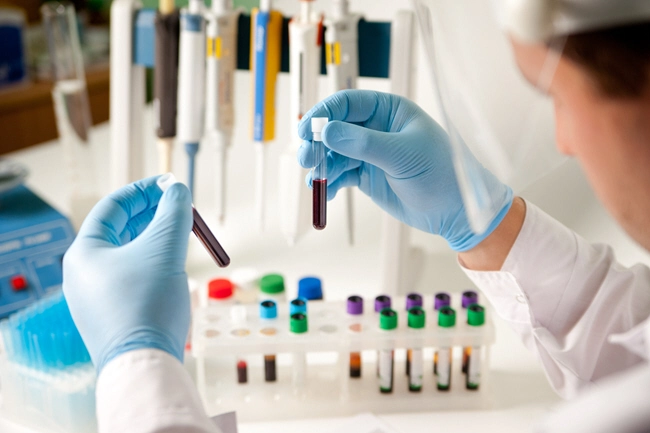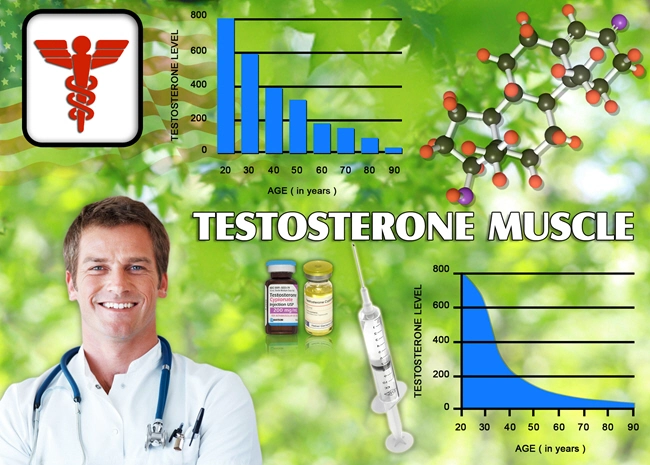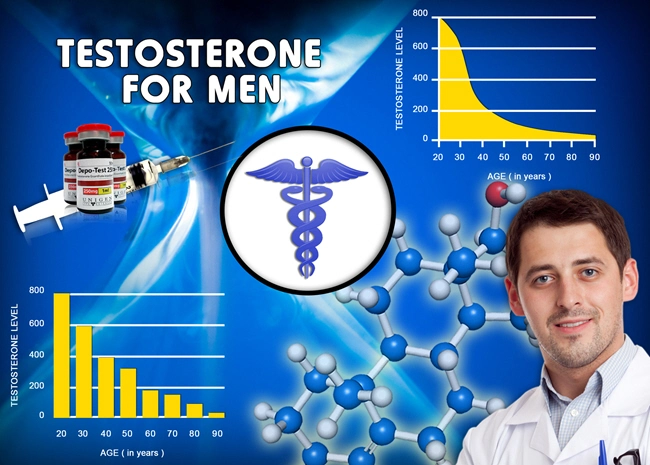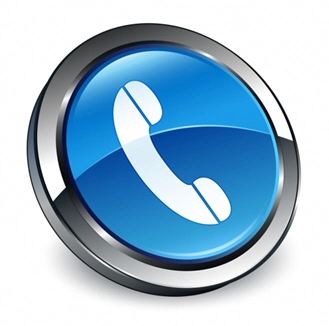
Video Link: https://vimeo.com/286854695
Video Download: Click Here To Download Video
Video Stream: Click Here To Stream Video
Are You Feeling Tired More Than Usual?
And are You Wondering Why?
Keep Reading...the Cause May Surprise You
As the months and years turn into decades, and you are blowing out more and more candles on your birthday cake, several uninvited guests continue to show 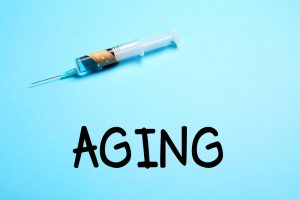 up, seemingly intent on crashing your party: diminished libido, lack of interest in sex, constant fatigue, loss of hard-earned muscle tone, pounds and blubber increasing like feral cats, mental fog, trouble getting to sleep, new joint aches and pains...well, you get the point.
up, seemingly intent on crashing your party: diminished libido, lack of interest in sex, constant fatigue, loss of hard-earned muscle tone, pounds and blubber increasing like feral cats, mental fog, trouble getting to sleep, new joint aches and pains...well, you get the point.
Aging is assaulting your body, and the results are not pretty.
In fact, it is a full-blown mid-life crisis, or so you may think.
The problem with that train of thought is that these hideous intruders will not go away even if you get that new shiny red convertible and finally convince your secretary (who is half your age) to start an affair with you.
No. Your Problems are Much Deeper and More Complicated
“Male menopause.”
That's right.
In spite of what you may have heard or believed, men go through “the change” just like women. And the primary cause of this unfortunate and unwanted condition is:
Lower Testosterone Levels
This is not a rumor or a myth.
It's a fact. Male menopause and testosterone levels (aka "Low-T") are intertwined.
Remember, testosterone makes men, for lack of a better word, MEN. Testosterone gives us muscle, energy, bravery, sex drive, and all of the other qualities that add so much to the zest of life.
Consider your body’s testosterone level as a bank account...an account that has to last a lifetime.
The problem is that, as men age, more money (testosterone) goes out the door.
Want proof?
Remember those halcyon days of your youth, when you could eat what you wanted and still stay slim?
Or stay out all night, and still be productive 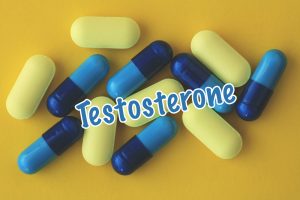 the next day? Or work out like a horse, and come back the next day, raring to go some more?
the next day? Or work out like a horse, and come back the next day, raring to go some more?
But when you hit the big 3-0, things began to change.
At around age thirty, a man's testosterone levels begin a steady drip...drip...drip, at a rate of about 1% a year.
Do the math.
When you hit 80, your levels of this precious hormone are about half of what they were in your twenties.
A precipitous crash.
During the past two decades, men ages 65-69 have experienced a dizzying drop in testosterone levels.
More alarming, recent research has demonstrated that nearly 1 in 4 men over 30 have “Low T” without any symptoms. Worse, 1 in 20 men of the same age range experience the clinical symptoms of Low-T, such as weight gain and the other problems mentioned earlier.
That Disgusting Expanding Belly and Those Repulsive “Love Handles.”
It's no fun being afraid to take off your shirt at the beach, or anywhere else, for that matter.
Being blubbery and rotund are two of the unwanted guests resulting from male menopause.
When the weight and flab pile on, testosterone levels suffer a precipitous drop.
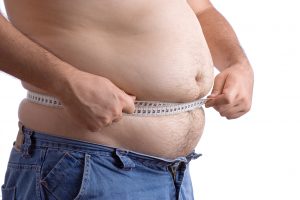
This expanding gut is more than a concern over your appearance.
The stomach secretes hormones directly linked to heart disease, obesity, and low testosterone.
The size of your belly plays a vital role in low testosterone.
The enzyme, aromatase, transforms testosterone into estrogen in the stomach.
Excess belly fat accelerates this hideous conversion.
As testosterone converts to estrogen, another unwanted, hideous guest may appear...MAN BOOBS!
Yuk!
Blowtourching fat and dropping pounds are crucial to boosting testosterone and warding off the effects of male menopause.
The Facts of Testosterone Replacement Therapy
As a result of this sudden appearance of the “party-crashers” listed above, hordes of men are embracing testosterone replacement therapy (TRT).
These treatments come in the form of an injection, a gel, or a patch, and are designed to boost low testosterone levels back to normal.
Men are spending an astonishing nearly $2 billion a year on TRT. This spending spree is a result of two things. First, some physicians over-prescribe testosterone as a default mode reaction to the problem, and the giant pharmaceutical companies (aka "Big Pharma") are engaged in advertising TRT as the fountain of youth.
For sure, we’re all looking for gimmicks, but undergoing a testosterone regimen may or may not be the answer.
The bottom line: testosterone injections should not be the first action taken when it comes to treating low T.
Men need to be aware of the fact that testosterone is a lifelong therapy, and is certainly no joke, or anything to be toyed with, or entered into lightly.
Once you’re on these treatments, a physician monitors your levels every six months or even more often, depending on your circumstance.
Therefore, you owe it to yourself to explore all your options and look to natural methods first, instead of plunging into replacement therapy.
Forms of Testosterone Replacement Therapy
- Transdermal Skin Patch: Androderm is a skin patch worn on the arm or upper body, applied once a day. This may cause terrible, maddening itching and fluid-filled blisters.
- Gels: AndroGel and Testim are most commonly used and come in individual packets of clear testosterone gel. They are applied once a day and absorbed
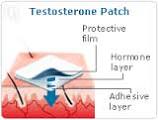 directly through the skin. AndroGel, Axiron, and Fortesta also come in a pump that delivers the prescribed amount of testosterone. Natesto is a gel applied nasally. These gels may also irritate and leave skin red, inflamed, or itchy.
directly through the skin. AndroGel, Axiron, and Fortesta also come in a pump that delivers the prescribed amount of testosterone. Natesto is a gel applied nasally. These gels may also irritate and leave skin red, inflamed, or itchy. - Testosterone Stick: Just like the underarm deodorant that you use every morning, it’s applied directly to the skin.
- Mouth patch: Striant is a tablet that is being implemented to the upper gum twice per day. It continuously releases testosterone into the blood through the oral tissues. Users may experience a nasty taste in the mouth, have a hard time tasting food, experience stinging or swelling of the lips, and gum pain, tenderness, swelling, and irritation in the mouth.
- Injections and implants: Testosterone can also be injected directly into the muscles or implanted as pellets in the soft tissues. The body will slowly absorb the testosterone into the bloodstream. Side effects include inflammation and pain.
- Testosterone pills: Two of the more common formulas are called methyltestosterone and testosterone undecanoate. Some evidence has shown that oral testosterone may cause damage to the liver.
All of these therapy options may have possible side effects including:
- Increased risk of heart attack and stroke
- Stimulation of prostate tissue
- Dangerous, possibly fatal blood clots
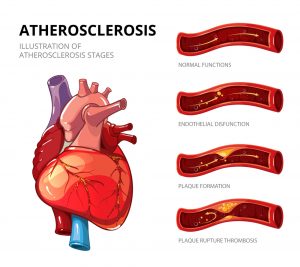
- Loss of hair
- Acne or oily skin
- Mild fluid retention
- Breast enlargement (“Man boobs, or “bitch tits”)
- Sleep apnea
- Shrunken testicles
- Increased aggression and extreme moodiness
- Decreased sperm count
Some men suffer from hypogonadism, a testosterone deficiency, where they don’t produce enough of the hormone naturally.
In some cases, testosterone replacement therapies may work but only after consulting with your urologist and carefully monitoring the dosage.
The Link Between Testosterone and Prostate Cancer
The debate over testosterone replacement and prostate cancer has raged on for quite some time and still goes on.
For decades, it was considered “the holy grail of Urology” that testosterone replacement therapy was like pouring gasoline on a raging fire when given to men with prostate cancer.
In some cases, hormonal therapy or androgen deprivation therapy is used to suppress a man’s testosterone levels in hopes of shrinking the prostate cancer tumor, but this does not cure prostate cancer.
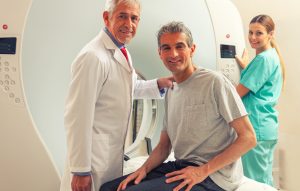 However, TRT is not advised for men with low or high-grade prostate cancer.
However, TRT is not advised for men with low or high-grade prostate cancer.
If men have a nodule on the prostate (discovered during a digital rectal exam) or a PSA greater than 3, TRT should be avoided.
Also, men with urinary issues, a severe heart condition, liver or kidney disease should probably not begin TRT.
Most doctors advise men considering TRT to undergo a thorough prostate exam before starting any therapy, including a digital rectal exam and PSA blood test.
Getting a baseline PSA before taking any TRT is critical, since it may increase after treatments begin.
Urologists should monitor the PSA carefully once treatments start.
Begin to Monitor Your Testosterone
When men turn 50, they should start to check their testosterone levels in the morning before 9 am.
The range can be anywhere between 300-1,000, but more is not better.
Optimal levels of testosterone should be between 400-600.
If the first test is low, be sure to repeat it. Never treat or diagnose low-T based on one test.
It’s important to consult with your urologist.
How is low-T diagnosed? Each man is looked at individually.
Everything is evaluated: their history, changes in sexual function, low libido, infertility issues, changes in sleep pattern, muscle strength, bone density, and weight gain.
Then, the physician will determine the best treatment path.
One last thing.
Before considering testosterone replacement therapy, men should look into natural ways to increase their testosterone.
This begins and ends with losing weight, but here are some more methods to consider:
- Limit alcohol intake: Even drinking moderate amounts of alcohol can cause testosterone levels to plummet.

- Reduce stress: be mindful of factors in your life that create stress. Mental or physical stress can quickly depress your levels. The stress hormone cortisol suppresses the body’s ability to make testosterone.
- High-intensity interval training (HIIT). High-intensity cardio exercise can cut stress in half but don’t overdo it. Injuries and fatigue are sure signs that your workout may lower testosterone.
- Zinc: The mineral Zinc is essential for testosterone production. Look to protein-rich foods like meats and fish. If you decide to supplement zinc, stick to a dosage of fewer than 40mg per day, since too much zinc can accumulate in the body, producing undesired results.
- Vitamin D: The “sunshine vitamin” is a big secret when it comes to healthy testosterone levels. Foods like shellfish, tuna, salmon, egg yolks, beans, and others work great. You can also look into taking vitamin D supplements, 1,000-2,000 IU per day and monitor your levels after that. Vitamin D levels should be between 30-60. Also, don't be afraid to catch a few rays. But don't overdo it. 10-15 minutes will boost your vitamin D levels, and you don't need to stay in the sun longer.
- Limit Sugar: When in doubt, cut sugar out. Testosterone levels drop off because sugar leads to a high insulin level.
- Healthy Fats: Foods like olive oil, raw nuts, coconut oil, grass-fed meats, and avocados are perfect for building testosterone. 50-70% of your diet should include healthy fats.
Contact our clinic for a free, no-obligation discussion about the benefits of testosterone replacement therapy.
References
https://www.mayoclinic.org/healthy-lifestyle/mens-health/in-depth/male-menopause/art-20048056
https://www.huffingtonpost.com/hope-gainer/male-menopause-fact-or-fiction_b_3891488.html
https://www.activebeat.com/your-health/11-true-facts-about-male-menopause/
Contact Us Today For A Free Consultation
Dear Patient,
Once you have completing the above contact form, for security purposes and confirmation, please confirm your information by calling us.
Please call now: 1-800-380-5339.
Welcoming You To Our Clinic, Professor Tom Henderson.

- LabCorp Announces a Change to the Testosterone Reference Range [Last Updated On: April 16th, 2025] [Originally Added On: June 23rd, 2019]
- Important Facts About Testosterone Therapy Before Buying [Last Updated On: April 18th, 2025] [Originally Added On: July 13th, 2019]
- Soy: Does it Lower Testosterone? [Last Updated On: October 18th, 2024] [Originally Added On: August 30th, 2020]
- Testosterone Treatments May Successfully Reverse Type-2 Diabetes in Some Men [Last Updated On: April 15th, 2025] [Originally Added On: November 13th, 2020]
- Testosterone Replacement Therapy (TRT) May Prevent Heart Attacks and Diabetes [Last Updated On: April 21st, 2025] [Originally Added On: November 17th, 2020]
- Did You Know? Recent Studies Have Confirmed the Link Between Low Testosterone (“Low-T”) and Depression. [Last Updated On: April 17th, 2025] [Originally Added On: January 10th, 2021]
- New Study Finds Testosterone Does Not Increase Your Heart Attack Risk [Last Updated On: April 14th, 2025] [Originally Added On: January 11th, 2021]
- The Great Testosterone Debate [Last Updated On: April 20th, 2025] [Originally Added On: January 14th, 2021]
- Testosterone Replacement Therapy Lowers Heart Attack Risk [Last Updated On: April 19th, 2025] [Originally Added On: January 18th, 2021]
- New Study Says: The Benefits of Testosterone Replacement Therapy Outweigh The Risks [Last Updated On: April 22nd, 2025] [Originally Added On: January 19th, 2021]
- Testosterone: How Much Do You Really Know About This Masculine Hormone? [Last Updated On: October 6th, 2024] [Originally Added On: February 9th, 2021]
- Low-T: What are healthy levels of Testosterone and why is it difficult to measure? [Last Updated On: September 11th, 2025] [Originally Added On: April 3rd, 2021]
- Testosterone Therapy May Be Good for the Heart if You Have Low-T [Last Updated On: May 3rd, 2025] [Originally Added On: July 21st, 2021]
- A Recent Study Concludes: Testosterone DOES NOT Cause Prostate Cancer [Last Updated On: September 14th, 2025] [Originally Added On: August 16th, 2021]
- In the Battle Against Aging, When do the Risks Outweigh the Rewards? [Last Updated On: April 4th, 2025] [Originally Added On: August 18th, 2021]
- New Study Concludes: Boosting Testosterone Levels Lowers Men's Death Risk [Last Updated On: May 11th, 2025] [Originally Added On: August 20th, 2021]
- Testosterone Replacement Therapy Slows Prostate Cancer! [Last Updated On: April 2nd, 2025] [Originally Added On: September 13th, 2021]
- Research proves that Testosterone Therapy Boosts Fertility! [Last Updated On: April 5th, 2025] [Originally Added On: September 26th, 2021]
- Free Testosterone and Sex Hormone-Binding Globulin [Last Updated On: April 6th, 2025] [Originally Added On: October 15th, 2021]
- Testosterone Does Not Cause Heart Attacks [Last Updated On: April 7th, 2025] [Originally Added On: October 15th, 2021]
- Testosterone and Women [Last Updated On: April 8th, 2025] [Originally Added On: October 15th, 2021]
- Testosterone and Metabolic Syndrome [Last Updated On: April 3rd, 2025] [Originally Added On: October 15th, 2021]
- Testosterone and Disease Prevention [Last Updated On: March 31st, 2025] [Originally Added On: October 15th, 2021]
- Judge Vacates $140 Million Verdict in Testosterone Lawsuit [Last Updated On: April 1st, 2025] [Originally Added On: October 15th, 2021]
- Testosterone and Estrogen [Last Updated On: April 9th, 2025] [Originally Added On: October 16th, 2021]
- Testosterone and Aging [Last Updated On: April 10th, 2025] [Originally Added On: October 16th, 2021]
- Testosterone Replacement Therapy (TRT) Benefits [Last Updated On: April 11th, 2025] [Originally Added On: October 16th, 2021]
- Testosterone and Male Menopause [Last Updated On: March 30th, 2025] [Originally Added On: October 16th, 2021]
- Testosterone Battles Obesity [Last Updated On: March 29th, 2025] [Originally Added On: October 16th, 2021]
- Why You Need Testosterone Replacement Therapy [Last Updated On: May 14th, 2025] [Originally Added On: October 16th, 2021]
- Testosterone FAQ's [Last Updated On: May 13th, 2025] [Originally Added On: October 25th, 2021]
- How Testosterone Impacts Sexual Preferences In Men and Women [Last Updated On: March 28th, 2025] [Originally Added On: October 30th, 2021]
- Growth Hormone and The Thyroid Gland [Last Updated On: April 24th, 2025] [Originally Added On: November 19th, 2021]
- How Does Masturbation Affect Testosterone Levels? Exploring the Science [Last Updated On: May 24th, 2025] [Originally Added On: March 27th, 2022]
- Testosterone Therapy Increasingly Used to Help Men Take Control of Aging [Last Updated On: May 25th, 2025] [Originally Added On: May 30th, 2022]
- The many benefits of Testosterone Replacement Therapy (TRT) [Last Updated On: November 1st, 2025] [Originally Added On: June 13th, 2022]
- Tlando Testosterone - A Brand New Way to Treat Low-T Safely with a Testosterone Pill [Last Updated On: May 28th, 2025] [Originally Added On: July 12th, 2022]
- Safe Tlando Testosterone Changes Landscape of Low-T Therapy [Last Updated On: May 30th, 2025] [Originally Added On: August 15th, 2022]
- Systems to Monitor Testosterone Replacement Therapy (TRT) [Last Updated On: October 12th, 2025] [Originally Added On: September 21st, 2022]
- Testosterone May Help You Keep Your Job (Or Find Another) [Last Updated On: June 12th, 2025] [Originally Added On: October 4th, 2022]
- Toxic Chemicals are Killing your testosterone…And your Manhood! [Last Updated On: October 28th, 2024] [Originally Added On: October 10th, 2022]
- A new study reveals that Testosterone improves body composition in men with low testosterone! [Last Updated On: October 22nd, 2025] [Originally Added On: October 17th, 2022]
- A former Mr. Olympia speaks about testosterone [Last Updated On: October 10th, 2025] [Originally Added On: November 8th, 2022]
- Testosterone Blockers Thwart Melanoma [Last Updated On: June 9th, 2025] [Originally Added On: December 11th, 2022]
